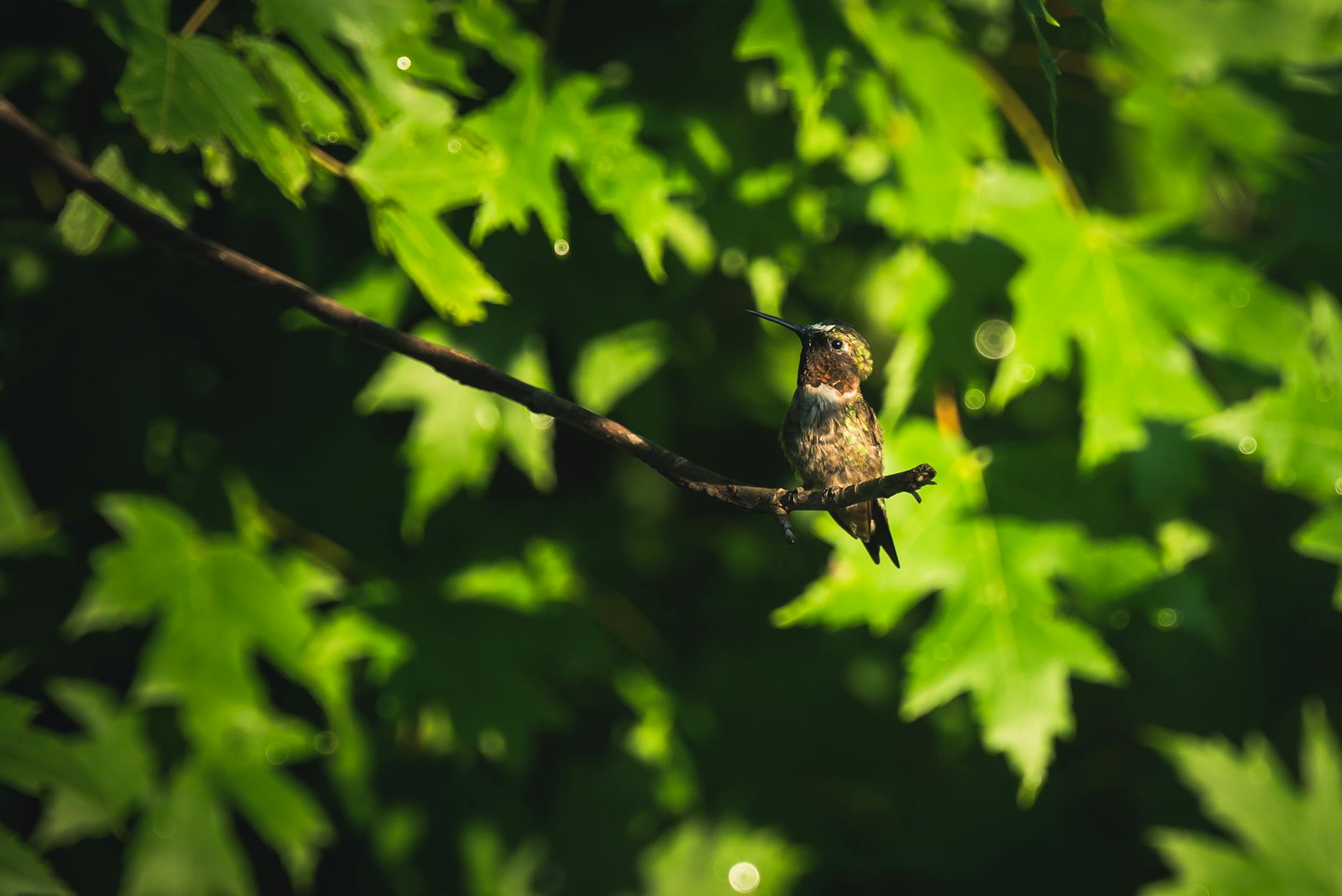
Are Hummingbirds Found in Southern Delaware?
Hummingbirds are a welcome sight in southern Delaware, especially during migration seasons. The ruby-throated hummingbird, recognised for its vibrant colours, is the most common species found in the area. While they’re most active from spring through autumn, rare visitors like the Rufous hummingbird occasionally make an appearance. Their role in pollinating plants and controlling insect populations highlights their importance to the ecosystem, making their presence both delightful and essential.
Common Hummingbird Species in Southern Delaware
Southern Delaware is home to diverse flora which attracts several hummingbird species throughout the year. While the Ruby-throated Hummingbird is a frequent visitor, other species occasionally make appearances during migrations. Let’s explore the common and rare hummingbirds found in the area.
Ruby-throated Hummingbird

Photo by Chris F
The Ruby-throated Hummingbird (Archilochus colubris) is the most commonly seen species in Southern Delaware. Distinctive for its iridescent green plumage and shimmering ruby-red throat on males, this tiny bird captivates nature enthusiasts. Females, while lacking the red throat, exhibit striking white underparts with green backs, blending well within the greenery.
Known for their remarkable ability to hover in place, Ruby-throated Hummingbirds are solitary creatures that thrive during the spring and summer months in Delaware. They migrate extensively, spending winters in Central America, often crossing the Gulf of Mexico in a single flight. During breeding season, males perform dramatic courtship displays, whirling through the air to impress potential mates.
Their diet largely consists of nectar from tubular flowers such as trumpet vine and bee balm, supplemented by small insects which provide protein. With an incredible wingbeat rate of up to 53 beats per second, their energy demands necessitate frequent feeding stops.
For more information about this fascinating species, check out the Audubon Field Guide on Ruby-throated Hummingbirds.
Occasional Visitors: Rufous, Anna’s, and Calliope Hummingbirds
While the Ruby-throated Hummingbird dominates sightings, several western species occasionally stray into Southern Delaware during migration. These include the Rufous Hummingbird, Anna’s Hummingbird, and Calliope Hummingbird.
- Rufous Hummingbird (Selasphorus rufus): Renowned for its fiery orange-red plumage, the Rufous Hummingbird has been reported in Delaware particularly during late autumn and early winter when it strays eastward. Despite its smaller size, it’s fiercely territorial, often chasing off larger birds from feeders.
- Anna’s Hummingbird (Calypte anna): A rarity in the east coast, this species sports a dazzling pinkish-red crown and throat. Native to the West, occasional sightings in Delaware provide a treat for avid birdwatchers.
- Calliope Hummingbird (Selasphorus calliope): The Calliope is the smallest hummingbird species in North America. Recognisable for its striking streaked magenta throat feathers on males, it’s an uncommon visitor that sparks excitement among local birding communities.
These western species, though rare in the region, underscore the importance of keeping feeders out and maintaining suitable habitat year-round. Curious about these exceptional visitors? Learn more on the eBird Guide about Western Hummingbirds.
While the Ruby-throated Hummingbird reigns as the region’s staple, occasional visits from these western hummingbirds add diversity and intrigue to Southern Delaware’s avian landscape.
Seasonal Patterns and Migration Times
Hummingbirds are incredible creatures with migration patterns that follow the rhythm of the seasons. In southern Delaware, their movements are influenced by environmental conditions, food availability, and their innate need to migrate. Understanding when and how these tiny birds travel can help you spot them at the right moment.
Spring Return

Photo by Sergio Cicuamia
Spring marks the eagerly awaited return of hummingbirds to southern Delaware. Starting in early April, the Ruby-throated Hummingbird is one of the first to arrive, having journeyed thousands of miles from its wintering grounds in Central and South America. This timing coincides perfectly with the blooming of spring flowers and the availability of nectar, their primary food source.
By mid-April to early May, their numbers increase as temperatures rise and food sources become more abundant. For bird enthusiasts, this is the best time to set up feeders filled with fresh sugar water (a mixture of four parts water to one part sugar). Providing food during this key period not only attracts hummingbirds to your garden but also supports their energy needs after their grueling migration.
Spring is also an important breeding season. Males are spotted performing elaborate aerial displays to attract females, and nests are soon built in shrubs or trees nearby. Observing them during this time can be a fascinating window into their lives.
For a detailed spring migration map, visit the 2024 Hummingbird Central Migration Tracker.
Fall Migration
As autumn approaches, hummingbirds begin their journey south to escape the cooler temperatures. The fall migration for hummingbirds in southern Delaware generally peaks between late August and early October. Their departure is triggered by shorter daylight hours and changes in food availability, such as the declining bloom of nectar-rich flowers.
Fall provides one of the best opportunities to observe hummingbirds, as they stop frequently to refuel. You’ll often see them darting between feeders and wildflowers, gathering energy for their non-stop flight across the Gulf of Mexico. Be sure to keep your feeders out longer than usual—some birding experts recommend leaving feeders up until two weeks after the last sighting. This ensures that any late travellers can find nourishment.
Additionally, the migration path of hummingbirds can be quite variable. While the Ruby-throated Hummingbird remains the most common, occasional sightings of the Rufous Hummingbird during fall also excite birdwatchers. Tracking tools like those from the Empress of Dirt Hummingbird Migration Map can help you predict their appearance and enhance your chances of spotting them.
Remember, migration is a critical time for their survival. By providing a safe habitat and reliable food sources, you’re playing a small but significant role in ensuring the continuity of their journey.





